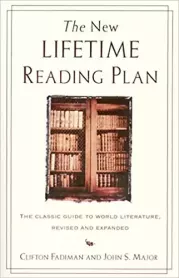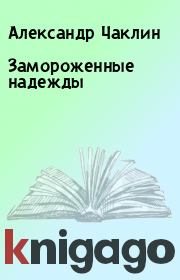Clifton Fadiman, John S. Major - The New Lifetime Reading Plan
 | Название: | The New Lifetime Reading Plan |
Автор: | Clifton Fadiman, John S. Major | |
Жанр: | Старинная литература | |
Изадано в серии: | неизвестно | |
Издательство: | неизвестно | |
Год издания: | 1999 | |
ISBN: | неизвестно | |
Отзывы: | Комментировать | |
Рейтинг: | ||
Поделись книгой с друзьями! Помощь сайту: донат на оплату сервера | ||
Краткое содержание книги "The New Lifetime Reading Plan"
Now in print for the first time in almost 40 years, The New Lifetime Reading Plan provides readers with brief, informative and entertaining introductions to more than 130 classics of world literature. From Homer to Hawthorne, Plato to Pascal, and Shakespeare to Solzhenitsyn, the great writers of Western civilization can be found in its pages. In addition, this new edition offers a much broader representation of women authors, such as Charlotte Bront%, Emily Dickinson and Edith Wharton, as well as non-Western writers such as Confucius, Sun-Tzu, Chinua Achebe, Mishima Yukio and many others.
This fourth edition also features a simpler format that arranges the works chronologically in five sections (The Ancient World; 300-1600; 1600-1800; and The 20th Century), making them easier to look up than ever before. It deserves a place in the libraries of all lovers of literature.
Читаем онлайн "The New Lifetime Reading Plan". [Страница - 3]
- 1
- 2
- 3
- 4
- 5
- . . .
- последняя (104) »
The inclusion in this edition of such works as the Koran— the fundamental scripture of Islam—and the Zen scripture The Platform Sutra of the Sixth Patriarch raises the question of why the Bible is not listed here as well. The reason is simple. We assume that nearly every reader of this book will own a Bible and be at least somewhat accustomed to reading it; and there is nothing we might try to say about it that would not seem presumptuous.
A number of authors represented in earlier editions of the Plan have now been dropped, as having not stood the test of time as well as one might earlier have expected. These include George Santayana, John Dewey, and Andrй Malraux (the latter demoted to a supplementary list of twentieth-century authors). Dropped, too, are several larger works of synthesis, such as the Durants's Story of Civilization. With the expansion of the book to include the non-Western world, we quickly realized that it would be better to drop that category of work, and to restrict our recommendations to what Robert Hutchens of the University of Chicago termed "original communications,,— books that retain the capacity to speak directly to us across gulfs of time and space. In addition to some two dozen writers from the non-Western world, a few new authors from the Western tradition appear here for the first time, including W. H. Auden, Charlotte Brontк, Emily Dickinson, Anthony Trollope, and Edith Wharton.
Also appearing here for the first time are a handful of scien- tists, from Galileo to Thomas Kuhn. Science is a somewhat dif- ficult category to accommodate adequately in the Plan, for sev- eral reasons. Scientific writing is frequently highly technical, making demands of knowledge that most readers cannot meet. Scientists have often, in addition, not been very good writers, nor has the culture of science necessarily encouraged an agree- able literary style; so many scientific works give little pleasure to the nonspecialist reader. It is also true that books have usu- ally not been the mйdium of choice for original communications in the sciences; most often scientific discoveries have been described in short papers presented at learned meetings or published in professional journals or, more commonly today, distributed as "preprints" on the Internet. But there have been exceptions to these patterns, and we present several of the most interesting of them here.
Still another change in this edition of the Plan is in the arrangement of material. In earlier editions, the readings were arranged topically, under such headings as Narratives, Plays, and Poetry, being grouped within those categories by original language. With the addition of non-Western works to the Plan, that arrangement began to seem more confusing than helpful. In this edition, works, regardless of genre or original language, are arranged in simple chronological order by the birthdates of their authors. (Dates are given in the culturally neutral form "Before Common Era" [b.c.E.] and "Common Era" [c.E.] in place of the specifically Western and Christian designations b.c. and a.d.) We have divided the body of the book into five parts that represent nothing but broad spans of time. They have no general worldwide significance—Heian Period Japan is not equivalent to medieval Europe in any meaningful way— but they might encourage you to look for particular contrasts and similarities in works from widely different places but of roughly the same age. Dividing the contents of the book into smaller parts will also, we hope, make the prospect of reading through ali of these works seem less daunting than it might otherwise.
A device that has been retained from earlier editions is the practice of including in our discussions cross-references from one author to others. These take the form of numbers in brackets; for example, talking of Thucydides, Fadiman says, "He is the first historian to grasp the inner life of power poli- tics. Hobbes [43], Machiavelli [34], and Marx [82] are, each in a different way, his sons." These cross-references are not intended to make you turn immediately to the authors men- tioned, or to try to follow a zigzag path of reading as one cross- reference leads to another. Rather their purpose is to get your attention, to make you pause for a moment to consider that the authors of these original communications have, over years and centuries, carried on a Great Conversation with each other; we can listen in. And even in cases where no direct communica- tion could be expected, there is often resonance; like calls to like, which is why the essay on Confucius contains a cross-ref- erence to Plato.
Following the main entries for the Plan, I have added a new section called Going Further. This lists, with very brief comments, selected works of 100 additional authors from the twentieth century, writers that you are likely to find to your taste if the books recommended and discussed at greater length have pleased and interested you. The Bibliography and Suggestions for Further Reading of previous editions have now been combined into a single Bibliography, which I have revised and updated as necessary.
Most of the entries in this edition have been carried for- ward from the third edition, with revisions ranging from minor to extensive. Clifton Fadiman has written new essays for some of the new Western authors included in this edition. I have written ali of the essays describing the non-Western materiais, as well as those for a handful of the newly included Western authors. Mr. Fadiman and I are very closely in accord in our literary opinions and judgments; we would hardly have under- taken this joint project otherwise. Nevertheless we have decided to sign each essay with the initials of its author; part of the value of this book should derive from the freedom of its authors to be opinionated, and we did not want to strive for an artificial homogeneity either of style or of judgment.
Ali of these changes have but one purpose, which is to make the Plan available and useful to a new generation of readers.
J.S.M.
A PRELIMINARYTALK ^WITH THE READER
The books here discussed may take you fifty years to finish. They can of course be read in a much shorter time. The point is that they are intended to occupy an important part of a whole life. Many happen to be more entertaining than the lat- est bestseller, but it is not on the entertainment levei that they are most profitably read. What they offer is of larger dimen- sions. It is rather like what is offered by loving and marrying, rearing children, carving out a career, creating a home. They can be a major experience, a source of continuous internai growth. Hence lifetime. These books are life companions. Once part of you, they work in and on and with you until you die. They should not be read in a hurry, any more than friends are made in a hurry. This list is not something to be "got
--">- 1
- 2
- 3
- 4
- 5
- . . .
- последняя (104) »


